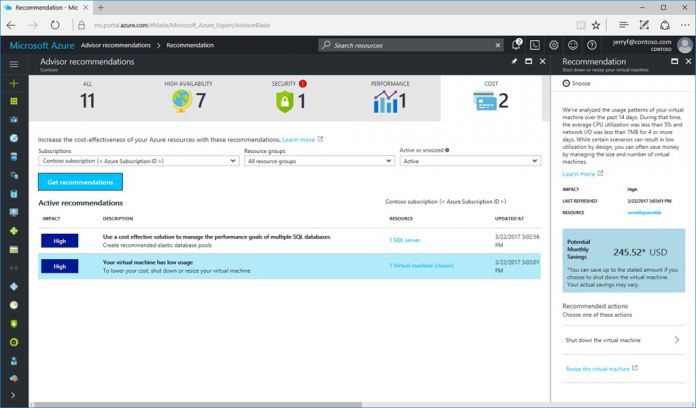Azure Advisor, Monitor, and Resource have been used internally by Microsoft to run and monitor Azure at scale. Starting today, the capabilities are available for all users, allowing them to receive notifications when Azure has issues. Customers running virtual machines can utilize metrics with Azure Monitor, which allows alerts to offer deeper Log Analytics. Azure Advisor offers help and tips to improve the Azure experience across security, performance, and cost. In its announcement post, Microsoft details the new capabilities and what they offer customers: “Azure Advisor provides personalized recommendations, and guides you through the best practices to optimize your Azure resources. By analyzing your resource configuration and usage, Azure Advisor provides guidance that helps you to improve the availability, security, performance, and cost effectiveness of your Azure resources. Azure Monitor is the built-in platform monitoring service that provides a single pipeline for monitoring and diagnostics data across all Azure resource types, enabling you to easily monitor, diagnose, alert, and notify of problems in your cloud infrastructure. It provides platform metrics with one minute granularity by default. Azure Monitor now includes improved alerting and notifications such as SMS, email, and webhook. While Azure Monitor provides platform-level telemetry, you can gain deeper visibility into application telemetry and operational insights from Azure Application Insights and Azure Log Analytics respectively. Collectively these services help you unlock a comprehensive monitoring and management experience across your platform, apps, and workloads, all within the Azure portal. Azure resource health helps you diagnose and get support when an Azure issue impacts your resources. It informs you about the current and past health status of your resources and helps you mitigate issues. Resource health provides technical support when you need help with Azure service issues.”
Azure Support for Multi-Member Consortium Blockchain Networks
Last week, Microsoft announced multi-member consortium blockchain networks support in Azure. With this addition, organizations have easy deployment on private networks across separate Azure regions and subscriptions. Microsoft is seeing three common topologies emerge: “Single organization, multiple subscriptions: This is a common topology when divisions in an organization do not trust each other, for example when one division is auditing another division. Each division has its own footprint, but they are physically separated in different subscriptions across the same Azure AD tenant. Multiple organizations, private: This is the true consortium scenario where each organization will have its own footprint and subscriptions, Azure AD tenants, and regions are all different. Given enterprise IT requirements, the services deployed must not be publicly accessible on the internet, even though communication will occur across organizations. Multiple organizations, public-facing: Similar to the above topology, but in industries, enterprises, or scenarios where IT requirements allow or require the services deployed to be accessible to the public, over the internet. This simplifies the network connectivity requirements for the distributed system.”




